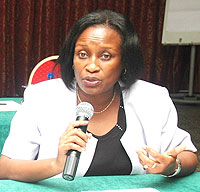East African Community (EAC) experts in conflict detection met in Arusha, early this week, to develop a framework of indicators which will facilitate the operationalisation of the EAC Early Warning Mechanisms (EAC-EWM). This was revealed, yesterday, in a statement released by the bloc’s secretariat. The EWM is an integral part of the Conflict Prevention, Management and Resolution (CPRM) framework.


East African Community (EAC) experts in conflict detection met in Arusha, early this week, to develop a framework of indicators which will facilitate the operationalisation of the EAC Early Warning Mechanisms (EAC-EWM).
This was revealed, yesterday, in a statement released by the bloc’s secretariat. The EWM is an integral part of the Conflict Prevention, Management and Resolution (CPRM) framework.
The mechanisms are requirements under the EAC Strategy for Regional Peace and Security and are also provided for in the draft Protocol on Peace and Security, which is expected to be concluded and signed this year.
The EAC Treaty recognizes peace and security as pre-requisites for the success of the EAC region’s integration process and stability.
Speaking at the forum, the EAC Deputy Secretary General (Political Federation), Beatrice Kiraso, said that development of an EWM in particular, would facilitate the monitoring of developments in the region that have the potential to cause insecurity and instability.
"Collection and analysis of information, formulation and submission of reports should facilitate response options to EAC decision-making organs,” she said, adding that: "Early warning can only be effective and justifiable if it leads to early action that would prevent the escalation of situations of conflicts into violence”.
She told the delegates, who included high-level military, intelligence and police officers from the region, that violent conflicts do not erupt overnight, but over time and can be caused by long historical underlying factors as well as emerging issues.
"This evolution occurs when there are structural conditions, processes and variables that escalate the conflict towards violence when no effective action is taken to reverse the process,” she noted.
Kiraso stressed that EWM Indicators are useful tools that would allow for continuous engagement in monitoring of these changes over time with the aim of detecting signs that a situation was developing that could lead to violent conflict.
Ends


